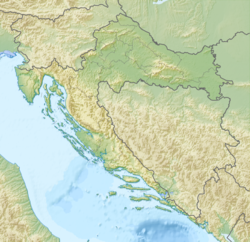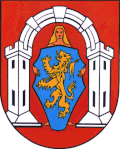| Vukovar Synagogue Great Vukovar Synagogue | |
|---|---|
Croatian: Velika Vukovarska Sinagoga | |
| The synagogue, c. 1900, prior to its desecration | |
| Religion | |
| Affiliation | Neolog Judaism (former) |
| Rite | Nusach Ashkenaz |
| Ecclesiastical or organisational status | Synagogue (1889–1941) |
| Status | Destroyed |
| Location | |
| Location | Lj. Gaja 13, Vukovar |
| Country | Croatia |
Location of the destroyed synagogue in Croatia | |
| Coordinates | 45°20′18″N19°00′14″E / 45.3382°N 19.0038°E |
| Architecture | |
| Architect | Ludwig Schöne (de) |
| Type | Synagogue architecture |
| Style | |
| Established | 1840s (as a congregation) |
| Completed | 1889 |
| Destroyed |
|
The Vukovar Synagogue, also the Great Vukovar Synagogue (Croatian : Velika Vukovarska Sinagoga), was a former Neolog Jewish synagogue, located in Vukovar, Croatia. The synagogue was completed in 1889, in the Kingdom of Croatia-Slavonia, within the Austria-Hungary, after the first smaller synagogue was sold to the Calvinist church in 1910. [1] The synagogue was devastated by the Nazis in 1941; and demolished in 1958.

